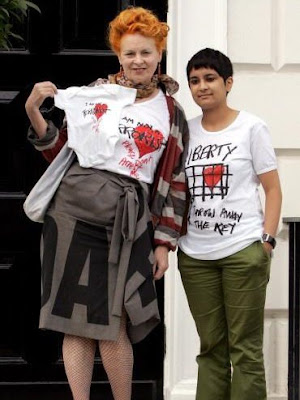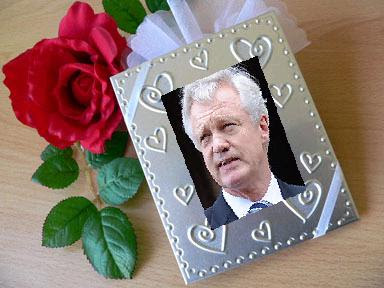She’s thirty-six US military bases in a country a third of the way around the globe. She’s over half a century old but the warhawks and the chickenhawks love her – she’s that sweet Korean Model. You know, the one they use as a model for Iraq.
President Bush (what a source!) has referred to the “Korean Model” for Iraq. Also, in discussing plans to keep US troops in Iraq, John McCain stated: “We’ve been in South Korea… for 60 years.” and Defense Secretary Robert Gates: “So I think that the reason that Korea’s been mentioned is – and it’s been mentioned in contrast to Vietnam, where we just left lock, stock and barrel.” and White House Press Secretary Tony Snow last year mentioned it too:” … in South Korea, where for many years there have been American forces stationed there as a way of maintaining stability and assurance on the part of the South Korean people against a North Korean neighbor that is a menace.”
Maintaining stability? Oh, yes, like against democratization movements. From the CIA Factbook: In 1993, Kim Young-sam became South Korea’s first civilian president following 32 years of military rule. To many South Koreans, the long American presence in their country is a reminder of tacit U.S. support for a series of ruthless despots. “South Korea between ’61 and ’89 was ruled by some of the worst military dictators created during the Cold War,” [Chalmers] Johnson says. “Finally the Koreans got rid of them and have quite a healthy democracy now. But all the credit goes to the Koreans – there is a terrible tendency for Americans to mislead themselves about the good things they have done in East Asia.” During that period, Korean history was marked by the The Gwangju Democratization Movement, a popular uprising in the city of Gwangju, South Korea from May 18 to May 27, 1980. During this period, citizens rose up against Chun Doo-hwan’s military dictatorship and took control of the city. During the later phase of the uprising, citizens took on arms to defend themselves, but were crushed by the South Korean army. Senior officials in the Carter administration approved South Korean plans to use military troops against pro-democracy demonstrations ten days before former General Chun Doo-hwan seized control of the country in a May 17, 1980, military coup, according to newly released U.S. government documents.
So our guys helped in domestic repression, but the South Koreans need help defending against the menace of North Korea, right?
Not exactly. South Korea currently ranks 12th in the world militarily, whereas North Korea is 18th. South Korea has twice as many men available to the military (24 million to 11 million) and roughly twice as many under arms (657,000 to 382,000). Economically the South ranks 13th in the world with a GDP of $982b (just above Australia), the North ranks 156th with $2b (just above Greenland). North Korea‘s gross national income was valued at $26.7 billion last year, with its per capita gross national income at $1,152, according to the Bank of Korea. By contrast, South Korea‘s $971 billion economy grew 5 percent last year, giving it a per capita income at $20,045.
Nevertheless, about 27,000 U.S. troops are stationed in South Korea, a legacy of the 1950–53 Korean War. The two Koreas (and the US) are still technically in a state of war since the 1950–53 Korean War ended with an armistice, not a peace treaty.
But while the US is technically still at war with North Korea, it no longer considers Korea to be a combat zone. In fact, the US Defense Secretary considers the country to be safe.
News report: Seoul, South Korea – Defense Secretary Robert M. Gates said Tuesday [June 3, 2008] that he supported extending the tours of thousands of troops stationed here to three years and allowing their spouses and children to live with them during their assignments. His endorsement adds momentum to a policy shift favored by commanders to improve the quality of life for most of the 28,500 troops assigned to South Korea on unaccompanied 12-month tours because South Korea was considered a combat zone, but that has changed. “I don’t think anybody considers the Republic of Korea today a combat zone,” Mr. Gates told reporters earlier this month.
Despite South Korea’s emergence as one of the most modern, progressive and democratic nations in the world over the past 55 years, the United States still rotates its troops here as through it’s still an active combat zone, Army Gen. Walter Sharp, who has recently taken command of U.S. Forces Korea, pointed out to the Senate Armed Services Committee during his confirmation hearing in April. At the time Defense Secretary Gates said that extending tours and allowing troops to bring their families to Korea would send the message that South Korea is safe, and would bring assignment policies in South Korea in line with those in Japan and Europe.
So South Korea is like Japan and Europe, not threatened and now just a nice safe place for US troops to bring their families. Nobody knows this better than the leaders of North and South Korea. The South and the North are reconciling.
Relations improved following the 1997 election of Kim Dae-jung. His “Sunshine Policy” of engagement with North Korea set the stage for the historic June 2000 inter-Korean summit between President Kim and North Korean leader Kim Jong-il. President Kim was awarded the Nobel Peace Prize in 2000 for the policy, but the prize was somewhat tarnished by revelations of a $500 million dollar “payoff” to North Korea that immediately preceded the summit. The United States, according to the US State Department, believes that the question of peace and security on the Korean Peninsula is, first and foremost, a matter for the Korean people to decide.
And they’ve done it. The leaders of North and South Korea last year signed a joint declaration calling for a permanent peace deal on the Korean Peninsula. South Korean President Roh Moo-hyun and the North’s Kim Jong-il issued the declaration after a three-day historic summit in Pyongyang.
The Korean people also want reunification. Christine Ahn testified to the US Congress on January 25, 2005, including the following. The Korea Institute for National Unification, or KINU, a national research policy institute, recently conducted a public opinion poll of 1000 South Koreans citizens and 300 leaders from political, media and civil organizations. It found that 84 percent of the public and 96 percent of opinion leaders believed that unification was an urgent task for the nation, and 85 percent of the general public and 95 percent of opinion leaders approved of North-South economic cooperation. Tourism has also been booming in North Korea. In 2005, over 275,000 South Korean tourists visited Mt. Kumgang resort in North Korea, bringing the total to over 1.1 million. That year, over 10,000 Koreans, not counting tourists, had social and cultural exchanges in the north, a doubling from 2002 to 2004, when an average of 5,000 Koreans met per year. Together, they reconstructed Buddhist temples and Christian churches, and held meetings to discuss intellectual property rights of literature and a common dictionary. Last year, North Koreans watched a South Korean opera, and this year, South Koreans will watch “Sa-yuk-shin,” a North Korean drama on TV.
Ahn’s testimony continued: Perhaps the most emotional aspect of this historic process is the meeting of families, many who have not seen their relatives in over 50 years. Last year, 660 separated family members were reunited in person, and 800 family members were able to see and speak to each other through webcast, a new technology that has helped the elderly who can no longer travel far distances. Koreans, seeing the significant gains in peace and reunification, are no longer willing to accept America’s Cold War mentality. On January 18th, the Journalist Association of Korea, the largest journalist group with 6,000 members, asked U.S. ambassador Alexander Vershbow to “stop making anti-North Korean remarks that do more harm than good,” and to apologize for his remarks, which they viewed as “an intrusion in domestic affairs.” South Korean President Roh Moo-hyun also recently made clear that he did not endorse U.S. sanctions against North Korea. If the Bush administration continues hostile regime change policies, Roh said, “there will be friction and disagreements between Seoul and Washington.”
And how do the Korean people feel about the continuing US presence?
One group of young Koreans claims that since 1945, U.S. soldiers committed over 100,000 crimes against South Korean civilians. Between 1993 and April 2000, these crimes averaged 820 incidents per year or 2 to 3 incidents per day. Yet, the South Korean government has only been able to bring to trial 20 or 3.56% of the 562 crimes committed in 1999 alone.
Obviously it doesn’t serve US interests for Korea to re-unite. Permanent war is better. But, despite what the White House says, if there is no threat and the South can handle a threat that arises, and the people and governments want to re-unite, then why does the US maintain troops in Korea fifty years after the war? Could it be financial? Could be, but the current expensive changes in US basing have caused a stir.
South Korea’s financial burden sharing for a multi-billion dollar project to relocate U.S. military facilities is expected to reach some 9 trillion won ($8.8 billion), a figure far higher than the originally estimated 5.6 trillion won. Last year, Seoul and Washington agreed on a master plan for the estimated $11-billion project under which South Korea was to pay about 5.6 trillion won. Under a 2004 land-swap pact, the United States is required to return 170 square kilometers of land housing 42 military bases and firing ranges across the country by 2011. In return, Seoul is required to offer 12 square kilometers of land to help triple the size of Camp Humphreys to some 15 square kilometers housing 500 buildings. The expanded Camp Humphreys, located 70 kilometers south of Seoul, will accommodate more than 44,000 U.S. servicemen, their families, base workers and South Korean reinforcements, according to the master plan.
The United States has called on South Korea to pay more to reach the 50-50 level in tune with the country’s growing economy and increased responsibility for national defense. “Defense burden sharing is advantageous to both partners. For the United States, the Republic of Korea’s willingness to equitably share appropriate defense costs is a clear indicator that the United States Forces in Korea are welcome and wanted,” USFK (US Forces Korea) Commander Gen. B. B. Bell said in a statement presented to the House Armed Service Committee on March 12. Under the Land Partnership Plan (LPP) reached in 2002, the United States promised to pay for moving the bases of the 2nd Infantry Division, north of Seoul, to Pyeongtaek, Gyeonggi Province, where a consolidated U.S. military base will be built. On the other hand, Seoul agreed to bear the cost for relocating the Yongsan Garrison in Seoul under the Yongsan Relocation Plan (YRP) finalized in 2004. Under a master plan drawn up by the two governments last year, Seoul agreed to spend about $5.2 billion on the program to move U.S. bases to Camp Humphreys, which will be tripled in size to accommodate more than 44,000 U.S. service members, their families, base workers and KATUSAs (Koreans serving with the US Army).
General Bell told Congress on March 12 that South Korea had paid “about $2 billion” in a relocation effort “that’s going to cost them around $10 billion.” His comments caused an uproar in South Korea, which had pledged to pay only about $4.5 billion toward the move. Bell blamed his comments on a “misstatement or mischaracterization” in a transcript of his speech, but the news service that provided the transcript said it reported his comments accurately.
And the landowners subject to land confiscation for base expansion weren’t happy either. From a 2006 news report: Daechuri, South Korea – Here in the marshy heartland of the Korean Peninsula, the rabble-rousing rice farmers of this tiny village are engaged in their own little war against the U.S. military. With American forces in the midst of their largest regional realignment in decades, the farmlands of Daechuri have been condemned to make room for the expansion of a nearby U.S. base. While about half the residents have quietly accepted a lucrative cash-for-land deal being offered by the South Korean government, a core group of about 70 holdouts have rebuffed all efforts to buy them out. Their refusals to make way for the base – or give in to what many of the farmers are calling “American bullying” – have won them instant hero status among some South Korean labor unions and student groups. Over the past several weeks, protesters have held the largest anti-American demonstrations in South Korea in four years, turning Daechuri into a symbol of their struggle to drive U.S. troops out of the country. “We are sick of being treated like America’s servants!” said Cho Sun Yeh, a fiery 90-year-old rice farmer. Her first home in the area was bulldozed to make room for a U.S. base during the 1950–53 Korean War.
So much for Tony Snow’s “assurance on the part of the South Korean people.”
The US is currently expanding its military forces and needs its overseas bases because there is no room for these troops in the United States, and it’s financially advantageous to dun our allies for half the cost of maintaining these troops and their families. The US needs these bases so badly, in fact, that it has put a terribly increased burden on the troops in Iraq (stop-loss, extensions, recalls etc.) just to keep these overseas bases in operation and the Empire in business. Not only that, but when it comes to newly invaded and occupied countries the US can use these anachronistic examples to justify more new and permanent bases in more countries. The US is in a self-perpetuating military empire mode with no end in sight, with the Korean Model as a prime example. And the new bases in Korea will accommodate fifty percent more troops than are currently stationed there! For three-year tours, with their families! Think of it – new schools, child development centers, gymnasiums, swimming pools – and two towns up from me the kids go to school in temporary trailers, just big boxes. Go figure. Edward Abbey: “As war and government prove, insanity is the most contagious of diseases.”
Incidentally, the sweet Korean model being used for a policy in Iraq may not be accepted by the Iraqis. Trudy Rubin, Philadelphia Inquirer, on the proposed Status of Forces Agreement: “A surge of Iraqi nationalism . . . spurred questions about whether the Iraqi parliament would deliver the required two-thirds vote to endorse an accord.”
Of course Miss Korea isn’t the only model that’s struttin’ her stuff – besides her there are enough other models to fill the runway: Germany, 75,603 US troops; Japan, 40,045 troops; Afghanistan, 17,900 troops; Italy, 13,354 troops; UK, 11,801 troops; Qatar, 3,432; Bosnia-Hercegovina, 2,931; and Iceland, 1,754 troops. Is that all? No. According to the US Postal Service there are about 3,000 overseas military ZIP codes.
So the warhawks and chickenhawks should lay off the Korean Model. She’s still sweet, but she’s no longer useful and she’s no longer wanted. Like Japan and Germany, and a hundred other places, she’s high maintenance and not worth the trouble. Bottom line – she sets a bad example, if you know what I mean. Give her the hook.
June 24, 2008
Don Bacon [send him mail] is a retired army officer who founded the Smedley Butler Society several years ago because, as General Butler said, “war is a racket.”
http://www.lewrockwell.com/orig9/bacon7.html












